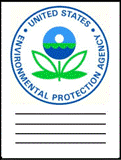United States Environmental Protection Agency

United States Environmental Protection Agency: Publications
Document Type
Article
Date of this Version
7-14-2018
Citation
Ecotoxicology and Environmental Safety 162 (2018) 438–445. https://doi.org/10.1016/j.ecoenv.2018.06.088
Abstract
The Medaka Extended One Generation Reproduction Test (MEOGRT) is a Tier 2 test within U.S. Environmental Protection Agency's (USEPA) Endocrine Disruptor Screening Program (EDSP), designed to characterize the potential adverse effects to fish of exposure to chemical that can cause disruption of the endocrine system. The MEOGRT focuses primarily on adverse effects to reproduction while collecting information regarding effects on growth, survival, and endocrine-related endpoints. However, the risk assessment process for fish, as mandated by legislation such as the Federal Insecticide, Fungicide, and Rodenticide Act (FIFRA) or the Toxic Substances Control Act (TSCA), could benefit from a more detailed assessment of effects on growth. Typically, fish growth data in support of risk assessment are obtained from full life-cycle tests or early life stage tests using the fathead minnow. As an alternative to these tests, a modified MEOGRT was conducted to assess the effects of diazinon on the various parameters measured in the MEOGRT. Diazinon is an organophosphate insecticide that is detected in the environment, and whose efficacy is a result of inhibition of the acetylcholine esterase enzyme at neuromuscular junctions and synapses of the nervous system. Diazinon (2.9, 5.2, 10.3, 19.8, and 40.2 μg/L) was tested with the MEOGRT protocol, and the lowest observable effect concentrations of 2.9 μg/L for fecundity and 5.2 μg/ L for growth were determined. Additional growth measurements were added to the MEOGRT protocol to more robustly define growth rates and to determine the impact size has on reproductive performance. Fish size starting at the first measurement day (i.e. 21 days post-fertilization), and continuing through the duration of the test was reduced with exposure to 5.2 μg/L and higher, and asymptotic size predicted from growth modeling was reduced at 10.3 μg/L and higher. By simply adding non-destructive growth measurements at two additional time points, the MEOGRT provided enough data for the parameterization of growth models, which could be used to characterize the reproductive implications of growth impairment.
Included in
Earth Sciences Commons, Environmental Health and Protection Commons, Environmental Monitoring Commons, Other Environmental Sciences Commons


Comments
This document is a U.S. government work and is not subject to copyright in the United States.